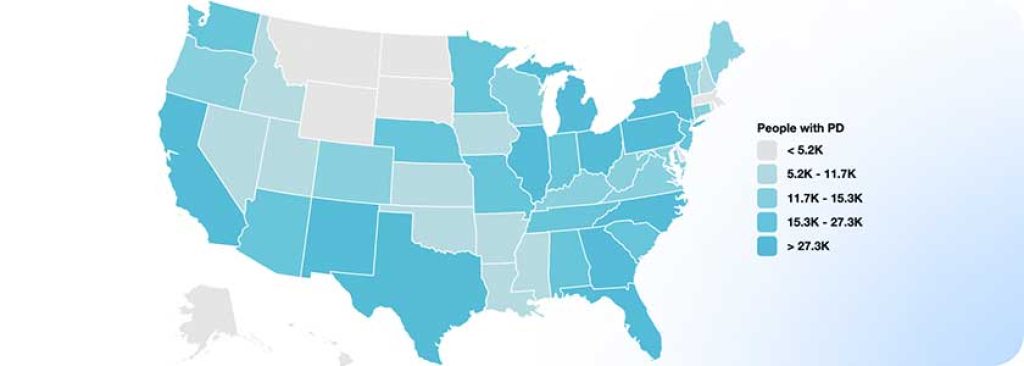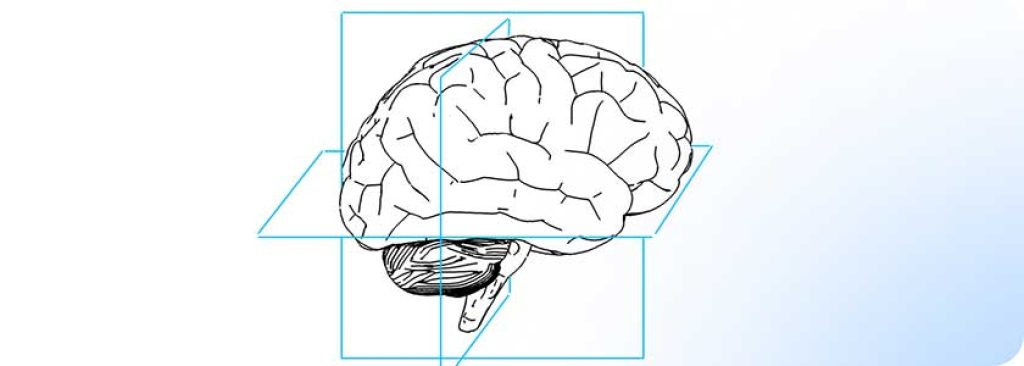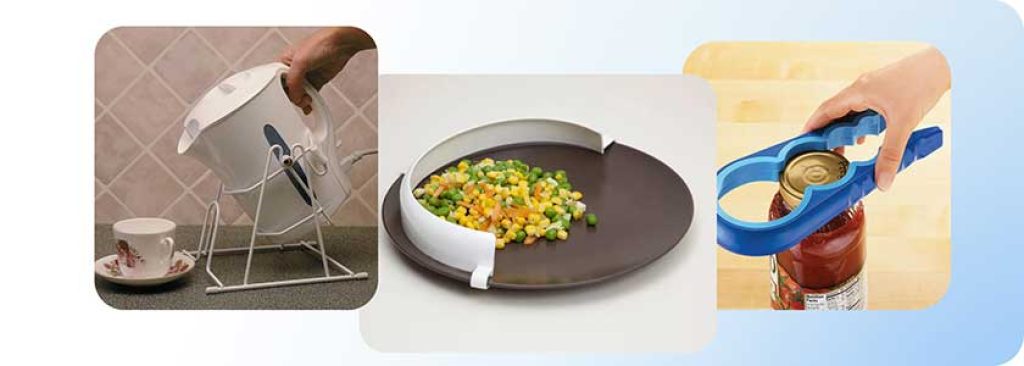Assistive & Adaptive Technology for Parkinson’s Patients
Software, Hardware, & Assistive Systems for Parkinson’s Symptom Management
Parkinson's disease is a neurodegenerative disorder affecting millions globally. What causes Parkinson’s? In many cases we just don’t know. About 10 to 15% of Parkinson’s cases have a genetic cause, with some families and ethnic groups carrying genes linked to the disease. In 85 to 90% of people with Parkinson’s, there is no reason for the disease onset that medical science can explain. These cases are known as “sporadic,” meaning they simply appear occasionally.
There may also be environmental factors that trigger onset or exacerbate the condition. Exposure to certain toxins sometimes found in herbicides and pesticides, specifically paraquat, rotenone and maneb, were shown to increase the risk of Parkinson’s by up to 150%. While paraquat is now banned in 30+ countries, it is still nevertheless widely used in the United States to boost crop production. Rotenone use stopped voluntarily in most of the U.S. around 2007, but other pesticides that affect the brain and nervous system, like permethrin, remain in use. Exposure to metal manganese for miners, welders and other steel industry workers has also been associated with increased Parkinson’s risk.
Statistics show Parkinson's disease to be the fastest-growing neurodegenerative disease after Alzheimer's. The Parkinson's Foundation estimates nearly 1 million people in the United States live with Parkinson's, with 90,000 diagnosed in the United States every year, and with a projected rise to 1.2 million by 2030. The World Health Organization reported over 8.5 million people with Parkinson's disease around the world, as of a June 2022 public health brief, but the Parkinson’s Foundation lists the number as 10 million or more worldwide.

Can Parkinson’s Be Cured? How Do I Know If I Have It?
Parkinson’s cannot be cured, and it is both chronic and progressive: it starts off slowly, and gets worse over time. Medication and surgery are both considered viable options to help regulate the brain and improve Parkinson’s symptoms. The most common medicine given is carbidopa-levodopa (which goes by the Rytary or Sinemet brand names, as well as other), and this may also be given to test whether symptoms improve. If they do, a diagnosis of Parkinson’s is confirmed.
Although there is no one test to diagnose Parkinson’s, a neurologist can provide a diagnosis based on symptoms, medical history, and full physical and neurological medical exams. Blood tests and MRI or PET scans may be suggested to rule out the possibility of other disorders. A new test is also in development: the alpha-synuclein seed amplification assay identified Parkinson's disease accurately in 87.7% of early tests, and it’s also a sensitive option for detecting which people are at risk of contracting Parkinson’s.

What can help people reduce the risk and effects of Parkinson’s? Research has indicated that high levels of vitamin D in the blood may offer a protective effect against Parkinson’s, and other studies suggest that aerobic exercise on a regular basis is helpful in managing symptoms. Enjoying caffeine-rich products such as coffee and tea, especially green tea, are all correlated with a lowered risk of Parkinson’s, but it’s not clear whether that’s related or a truly protective factor. Time may tell.
When Does Parkinson’s Appear?
It’s uncommon for Parkinson’s to strike earlier than 50, and most cases show up after age 60. In rare cases, about 2% of the current 1 million individuals with Parkinson’s, people younger than 40 may be diagnosed. This is known as early-onset Parkinson’s. Juvenile Parkinson’s disease (JPD) is extremely rare: in this version of the movement disorder, it presents in those younger than age 21. For these patients, the cause is usually a genetic mutation.
Five Main Symptoms of Parkinson’s
Parkinson’s primarily impacts movement, causing tremors, stiffness, and balance problems. Daily activities like dressing, eating, and writing can become significantly more challenging.
Not Sure If It’s Parkinson’s? Watch For These Symptoms
- Tremor
Shaking often starts with a hand, although a foot or the jaw can sometimes be affected first. Parkinson’s tremors are noticeable for their back-and-forth rhythmic rolling motion, which can be a thumb and forefinger moving in a way that looks like “pill rolling”. Tremors are most obvious when hands are resting, or when the person is under stress, and they can disappear when the person is asleep. Shaking can decrease when performing intentional tasks, and can also improve when movement is purposefully directed. - Rigidity
Muscle stiffness, with muscles tensed and resistant to movement, is common with Parkinson’s. The stiffness is more noticeable when another individual tries to move the person’s arm, which responds with shorter, jolting or jerking movements. This is sometimes called “cogwheel” rigidity. - Bradykinesia
Slowed-down movement can be especially frustrating. It makes basic activities difficult: everyday tasks like washing or getting dressed slow down, like a slow motion movie effect. Facial expressions may be more limited, referred to as “masked” face. Bradykinesia can also lead to dragging or shuffling feet when walking. - Postural Instability
Poor balance and posture changes (leaning forward with the whole body or just the head, leaning to one side, stooping, rounded shoulders and limited lower back curve) make it hard to move and increase fall risk. - Speech Change
Speaking softly or more quickly, or slurring words, or hesitation while talking, are all characteristic of Parkinson’s. Speech may also be more monotone, rather than following average speech patterns.
Other early warning signs of Parkinson’s include losing the ability to move unconsciously: blinking, spontaneously smiling, or swinging arms while walking. And, it may become more difficult to write, and writing appears smaller. Loss of food smells like bananas, licorice and dill pickles are another common sign, although these days smell loss may be mistaken for a symptom of viral disease.Symptoms of Parkinson’s that are not related to motor impairment are sometimes even more difficult to deal with. They can include cognitive and mood disorders, fatigue, sleep trouble, lightheadedness and even hallucinations. If you or a loved one are dealing with Parkinson’s, get diagnosed, get treatment, and get help. There’s more support out there than you might be aware of. Some of it comes from family, friends, and community. Some support can be offered by tools and technology: from advanced software to high-tech hardware to basic tools like rubber grips, or clever innovations like a hot water tilting kettle mechanism.

Adaptive Equipment & Assistive Devices For Parkinson's Disease
Parkinson's disease can present significant challenges for daily activities. Assistive and adaptive equipment and technologies for Parkinson’s patients can offer a range of tools for managing tasks with tremors and limited mobility, and to improve independence and function physically and cognitively.
Mobility Aids and Devices
- Walking Aids
Canes, walkers, and rollators provide stability and balance support, reducing falls and increasing confidence during movement. For instance, the Parkinson's Foundation recommends the innovative Parkinson's Pacer cane, which vibrates at specific rhythms to help improve gait patterns. - Wearable & Robotics
Among other available devices, a new robotic garment has been released which can help Parkinson’s patients walk without a gait freeze. It works by pushing gently on the hips as the leg swings. The small mechanical assistance can deliver instant effects and improve walking in a variety of conditions. - Adaptive Utensils
Weighted utensils with built-up handles are simple assistive devices for minimizing the effect of hand tremors and enhancing grip strength, making eating easier. - Dressing Aids
Long-handled shoehorn reachers and button hooks can simplify dressing routines. - Daily Task Tools
Automatic jar openers, electric toothbrushes, and grip enhancement products can all assist with daily tasks.
Communication Technology
- Text-to-Speech & Speech-Generating Devices & Software
This technology offers individuals with impaired speech a way to communicate effectively. One popular option is the lightweight and portable Accent 1400 text-to-speech device by the Prentke Romich Company. - Voice Recognition
Software that allows users to control devices and navigate computers with voice commands is becoming increasingly sophisticated. - Voice Control
Smart home features can be controlled with voice commands, allowing for hands-free operation of lights, thermostats, and appliances.
Web & Computer Accessibility for Parkinson's Patients
- Screen Readers
These programs convert text on a screen into spoken audio, making web browsing and information access possible for those with limited vision. - Keyboard Navigation
Allow users to navigate websites and applications efficiently using keyboard shortcuts instead of a mouse, which can be difficult to control with hand tremors. - Web Plugins, Extensions & Overlays
These software applications can be added to web pages to simplify layouts, increase font sizes, and improve color contrast, making web content easier to read for people with visual impairments, and easier to access for people with a variety of disabilities.
Smart Home Technology
Smart home features can automate tasks and enhance safety. Leak detectors and automatic shut-off valves can prevent flooding, while motion sensors can trigger lighting or send alerts for added security. Smart thermostats can be controlled remotely for increased comfort and energy savings.
Wearable Technology for Symptom Monitoring & Safety
- Symptom Monitoring
Some wearable devices can track tremors, monitor gait patterns, and even offer medication reminders. These tools can provide valuable data for patients and doctors in managing Parkinson's symptoms. Wearables can offer insights into disease progression, allowing for adjustments in medication or care plans. - In-Home Safety
Devices can track tremors, rigidity, and bradykinesia (slowness of movement) to detect potential falls or gait freezing episodes. Sensors can trigger alerts to designated contacts if abnormal movement patterns are identified, prompting intervention.
Software and Apps for Cognitive Support
Applications can help with memory lapses, organization, and medication scheduling. These tools can provide valuable support for cognitive challenges sometimes associated with Parkinson's.
Although this is not an exhaustive list, it highlights the diverse ways assistive technology for Parkinson's disease can support people in living better, easier, and more independent lives.
Hope On The Horizon: Treatment & Medical Tech for Parkinson’s
Researchers are actively exploring new avenues for Parkinson's treatment. Preliminary results of a clinical trial in France show that lixisenatide, a diabetes drug, can significantly slow motor symptoms progression. A recent study in Nature identified a potential protein target that could slow or prevent the progression of the disease. Calcium level channel blocking intervention is also being studied as a method to slow Parkinson’s progression. Gene therapy is another possibility.

Deep brain stimulation (DBS) has long been approved for Parkinson’s related tremor use; it’s one of the most effective treatment options if medication like levodopa is contraindicated for any reason, offering long-term improvement. New advances have now introduced a way for patients to control their DBS device stimulation at home.
MRI-guided focused ultrasound is another minimally-invasive way to help people manage Parkinson’s tremors. Guided by MRI, ultrasound waves aim at the portion of the brain where tremors begin, and use high-temperature waves to burn away areas that cause tremors.
A less invasive form of brain stimulation, transcranial direct current stimulation, involves electrodes attached to the skin or just beneath the skin. A device called ParkinStim can be worn during sleeping hours, providing stimulation that helps them wake up feeling better even if medication has worn off. It can also help people with Parkinson’s decrease their medication amount or frequency. Another wearable called the CUE1 from Charco is a small disc with a high-frequency vibrating electric motor inside. It’s relatively inexpensive and totally noninvasive, attaching to the skin with medical adhesive.
In the United Kingdom, patients with advanced Parkinson’s will receive a portable drug infusion device, releasing foslevodopa–foscarbidopa medication gradually around the clock to help control symptoms.
Integrative and holistic medicine, focused on “whole person” healing, and alternative medicine are other ways people may wish to treat or improve their Parkinson’s symptoms. These techniques may be more ancient than cutting-edge, but that’s not to say they don’t work. Massage therapy, tai chi, yoga, and other relaxation and meditation techniques can be helpful for pain, motion difficulty, and mood. And, having a dog or cat can not only improve mental health, it is recommended by doctors to help with improving flexibility and range of movement for Parkinson’s patients.
In a time where technology advances rapidly, we must remember the importance of considering everyone's needs, especially the needs of people with disabilities including Parkinson's Disease. With this inclusive perspective, we can create technologies that improve lives and help build a more accessible world. This empathic and compassionate approach harnesses the power of innovation make daily life more manageable and enjoyable for everyone. Together, we work towards a future where we can all participate fully in a barrier-free society, all of us benefiting from the advances that shape our world.
FAQs
Yes, many assistive technologies offer customization options to meet the specific requirements of individuals with Parkinson's as well as other disabilities, offering more personalized support.
Speech-generating devices produce spoken words for those unable to speak, while voice recognition technology translates spoken words into text or commands for devices.
Cognitive support software provides exercises and activities to help maintain cognitive functions, supporting mental agility and memory. And, memory and organizational apps can be helpful tools for managing daily tasks and routines. These tools offer valuable support for people experiencing cognitive changes due to Parkinson's disease.
The frequency of updates or replacements varies, but regular reviews with healthcare providers are advisable.









